#trackway
Photo

#Castleton#Derbyshire#England#Peak District#29 May 2023#sheep#public footpath#trackway#dry stone wall#photography#original photography#original photograph
114 notes
·
View notes
Text
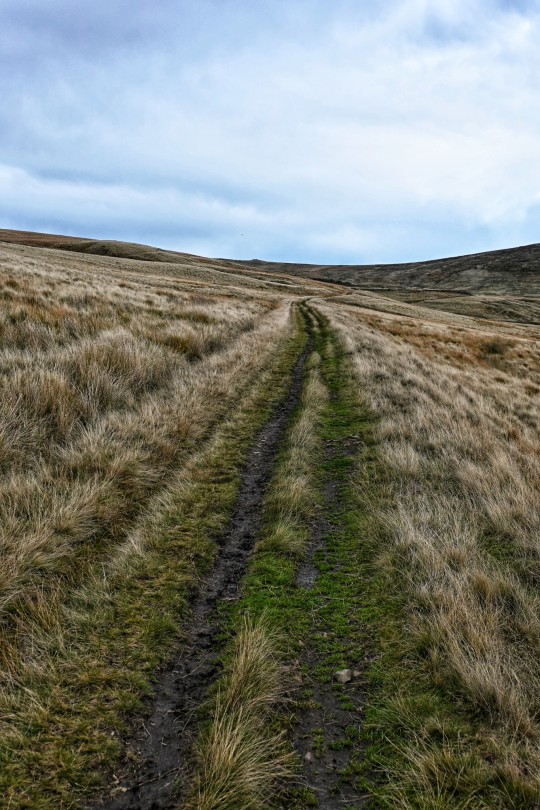


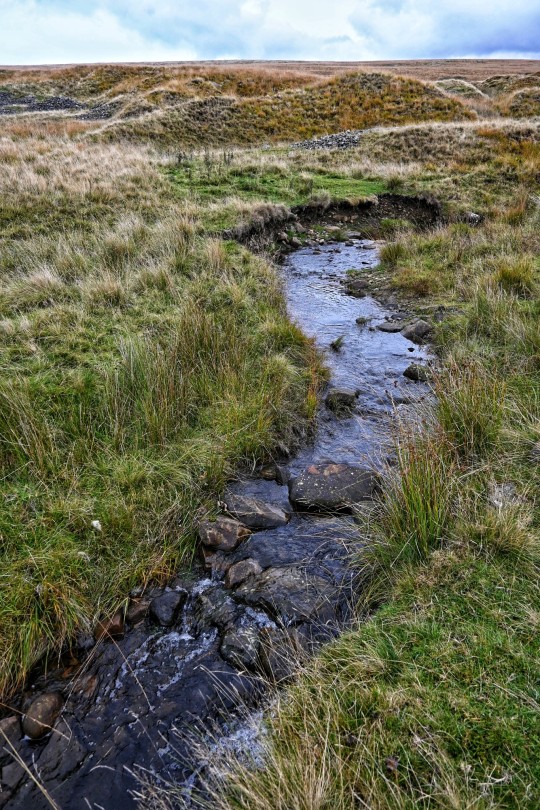
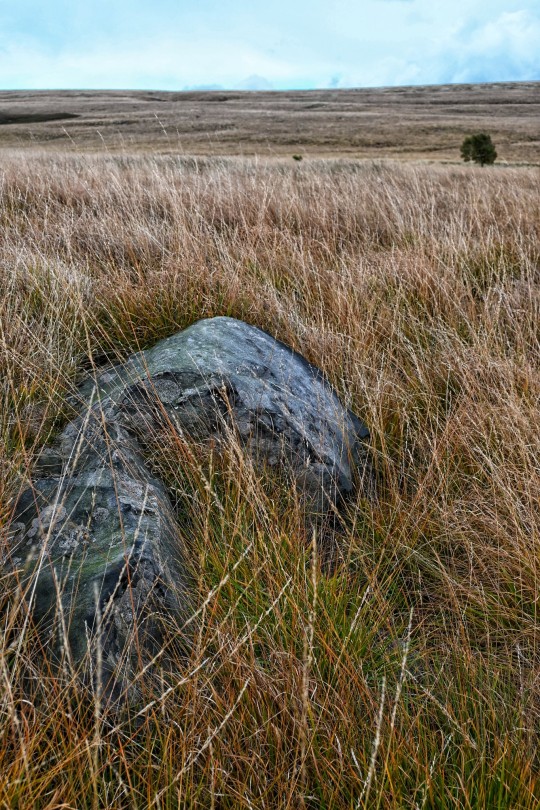

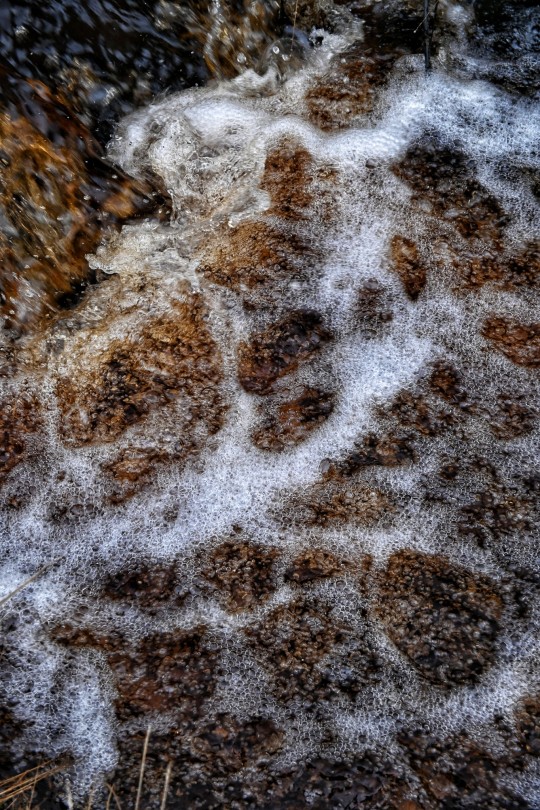
Maiden's Cross, The Hushings and The Long Causeway, Worsthorne Moor, nr. Burnley, Lancashire
#landscape#outdoors#wild places#nature#ancient route#routeway#stonework#trackway#moorlands#lancashire#ancient woodland#trees and forests#tree trunk
85 notes
·
View notes
Text
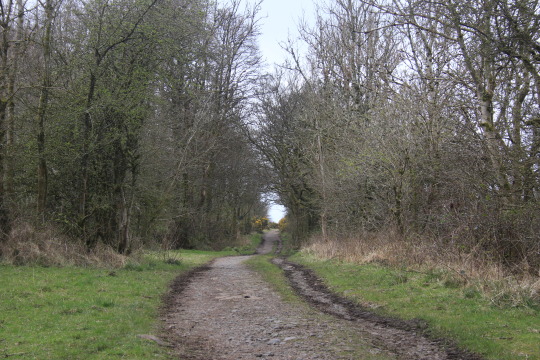
1 note
·
View note
Text
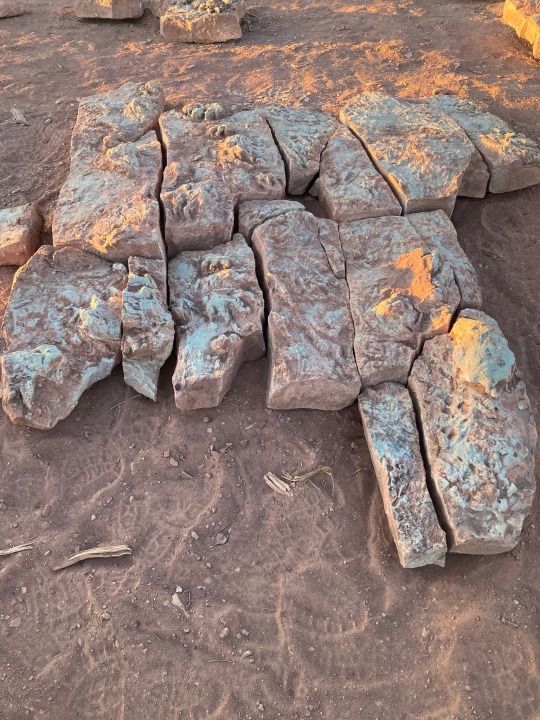
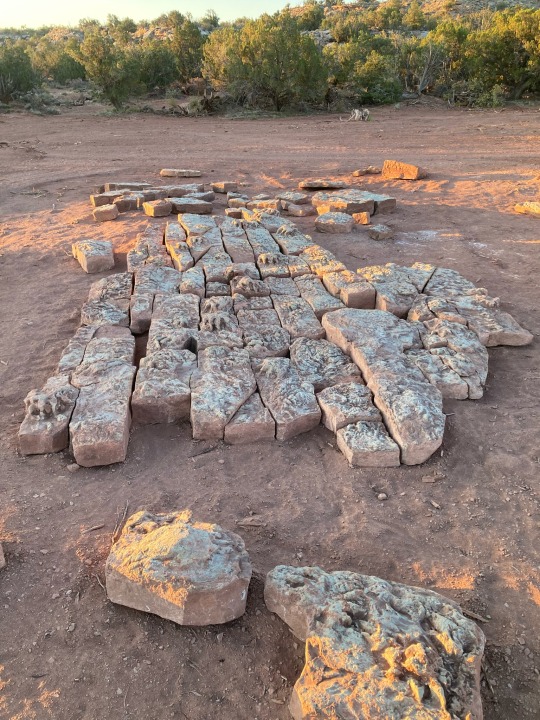
Latest progress on trackway reconstruction. Gotta figure out where the smaller section joins up.
0 notes
Text
Time Travel Question 36: Prehistory (Iteration Unknown)
These Questions are the result of suggestions from the previous iteration.
Please add new suggestions below if you have them for future consideration. All cultures and time periods welcome.
#Time Travel#Prehistory#Paleontology#Dinosaurs#Perucetus#Pangea#Campanian Ignimbrite Supervolcano#The Ediacaran Period#Evolution#Extinct Animals#Diplodicus#Deinonychus#Acrocanthosaurus#The Glen Rose Trackway Hunt#Andrewsarchus
376 notes
·
View notes
Text
would y'all be interested in seeing the doc i have written up for references for the raptors in clever girl
#most of their behaviour is theoretical and based on birds of prey (some is also based on crocodilians!)#and some is also based on inferences from fossil evidence like trackways of deinonychosaurs moving together#could write it like an in-universe guide maybe? say it's the 'official' handbook donnie gave to all his brothers?#fic: clever girl
3 notes
·
View notes
Photo
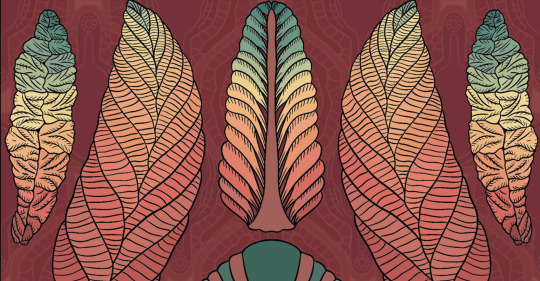
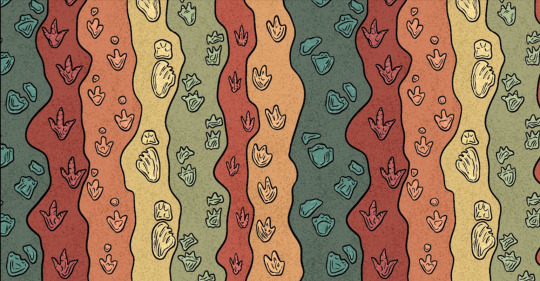
Spent most of the day on Procreate. Wanted to see if I could design some sort of paleontologically–inspired fabrics, ultimately for quilting purposes, though it’s proving to be more taxing than expected! The first was done on a whim some time ago. The second was today’s venture, a reasonable piece after a series of abstract failures that did not manifest prettily.
The first is the Quilted Organisms of the Ediacaran. I thought it was rather serendipitous, having quilted organisms on a (future) quilt. There are a bunch of Precambrian life forms in this one, including Charnia, Rangea, Dickinsonia Spriggina and Fractofusus. (There’s also Vernanimalcula in the background, and I have a bunch of blender fabrics with the same).
The second is the March of the Dinosaurs. This one is based on dinosaur trackways, which are vaguely colour coded here—red for theropods, yellow for a sauropod, orange for ornithopods, dark green for triceratops and light green for ankylosaurs. Alas the spectrum does not imply relatedness, though if it bothers me sufficiently I might just change it, but we’ll see.
#crafty things and progress posts#science meets art#since all things here are science based you bet that I have infographics in the same style#with details on dinosaur locomotion to comparative morphologies between charnia and sea pens#and also scale bars! unmissable in geol#glen kuban's website is a GOLD MINE for all things dinosaur trackways#need to do a deep dive#geology#paleontology#too many ideas not enough time#and very high deletion stats here oof
44 notes
·
View notes
Text

Footprints in a prehistoric desert.
Based on those found in the Permian deserts from creatures that we have never seen.
#palaeoart#art#paleontology#permian#desert#footprints#paleozoic#ancient trackways#watercolour pencils
13 notes
·
View notes
Text
The one thing my dad wanted to do in New York was visit the natural history museum to see the dinosaur footprint trackways- he wasn’t amused when I told him there were some on the sidewalk outside the museum as well
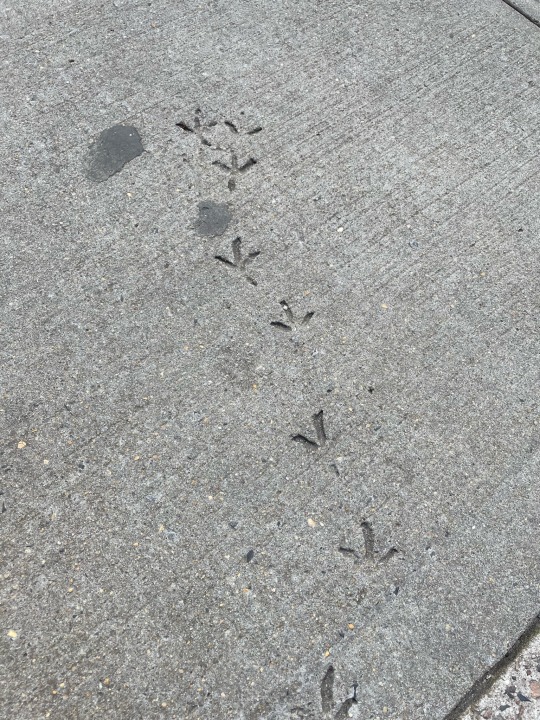
1K notes
·
View notes
Text

More than 10,000 years ago, a woman or young man made 2 trips separated by at least several hours, carrying a toddler in at least one direction. Their trackway, in what's now New Mexico’s White Sands National Park, stretch for 1,5 km and consists of more than 400 human prints
Click for more:
1K notes
·
View notes
Text
A small woman—or perhaps an adolescent boy—walks quickly across a landscape where giant beasts roam. The person holds a toddler on their hip, and their feet slip in the mud as they hurry along for nearly a mile, perhaps delivering the child to a safe destination before returning home alone.
Despite the fact that this journey took place more than 10,000 years ago, a new paper published in the journal Quaternary Science Reviews manages to sketch out what it might have looked and felt like in remarkable detail.
Evidence of the journey comes from fossilized footprints and other evidence discovered in New Mexico’s White Sands National Park in 2018, reports Albuquerque TV station KRQE. Toward the end of the late Pleistocene epoch—between 11,550 and 13,000 years ago—humans and animals left hundreds of thousands of tracks in the mud along the shore of what was once Lake Otero.
The new paper investigates one specific set of tracks, noting details in the footprints’ shapes that reveal how the traveler’s weight shifted as they moved the child from one hip to the other.
“We can see the evidence of the carry in the shape of the tracks,” write study co-authors Matthew Robert Bennett and Sally Christine Reynolds, both of Bournemouth University in England, for the Conversation. “They are broader due to the load, more varied in morphology often with a characteristic ‘banana shape’–something that is caused by outward rotation of the foot.”
At some points along the journey, the toddler’s footprints appear as well, most likely because the walker set the child down to rest or adjust their position. For most of the trip, the older caretaker carried the child at a speed of around 3.8 miles per hour—an impressive pace considering the muddy conditions.
“Each track tells a story: a slip here, a stretch there to avoid a puddle,” explain Bennett and Reynolds. “The ground was wet and slick with mud and they were walking at speed, which would have been exhausting.”
On the return trip, the adult or adolescent followed the same course in reverse, this time without the child. The researchers theorize that this reflects a social network in which the person knew that they were carrying the child to a safe destination.
“Was the child sick?” they ask. “Or was it being returned to its mother? Did a rainstorm quickly come in catching a mother and child off guard? We have no way of knowing and it is easy to give way to speculation for which we have little evidence.”
The fossilized footprints show that at least two large animals crossed the human tracks between the outbound and return trips. Prints left by a sloth suggest the animal was aware of the humans who had passed the same way before it. As the sloth approached the trackway, it reared up on its hind legs to sniff for danger before moving forward. A mammoth who also walked across the tracks, meanwhile, shows no sign of having noticed the humans’ presence.
Another article: https://www.sciencedirect.com/science/article/abs/pii/S0277379120305722
1K notes
·
View notes
Text
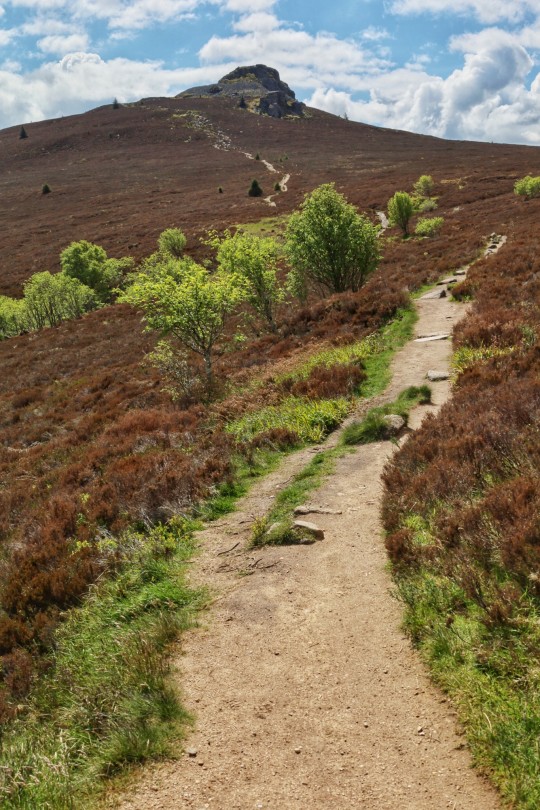
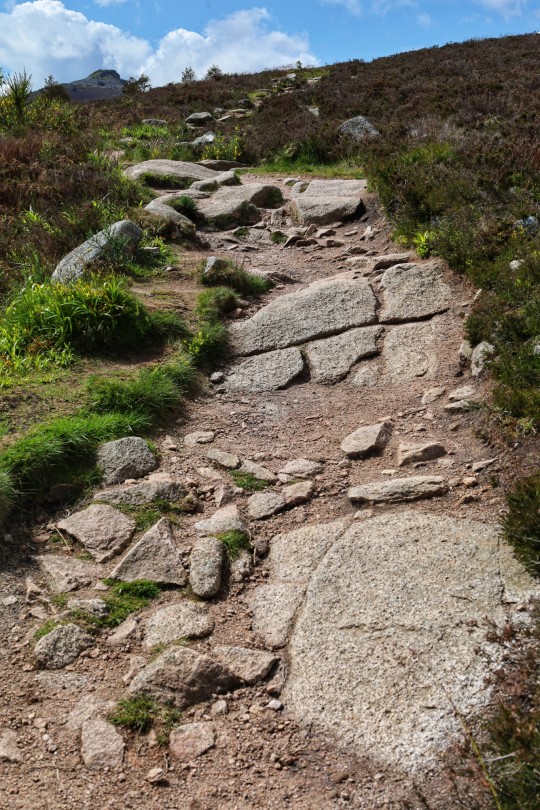
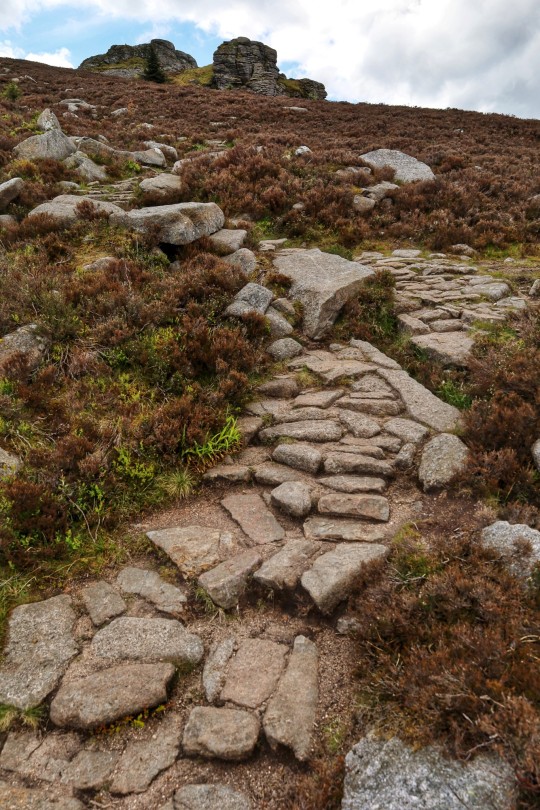
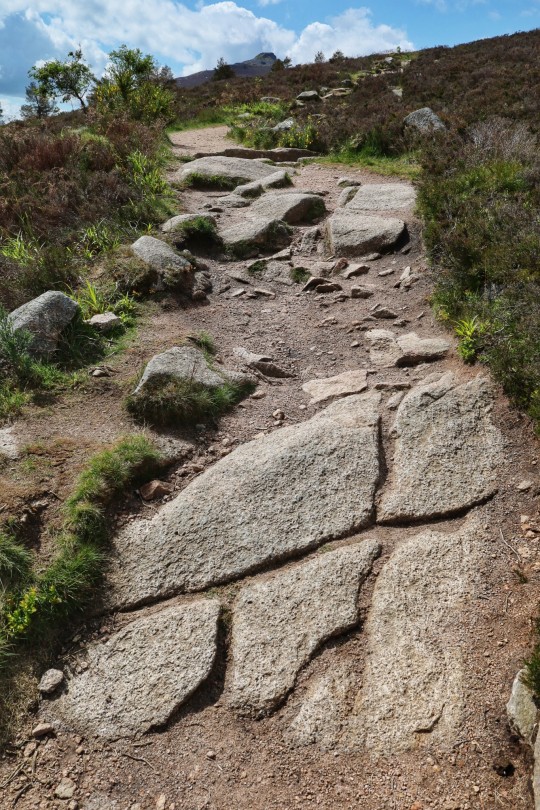
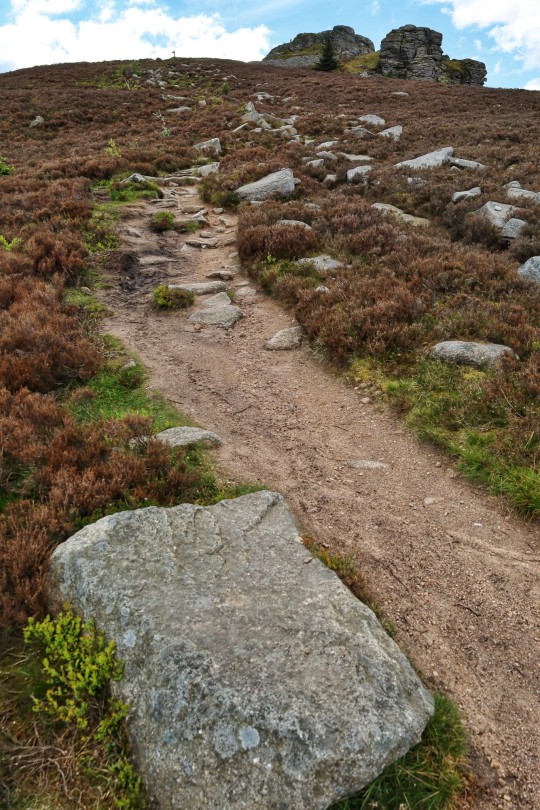

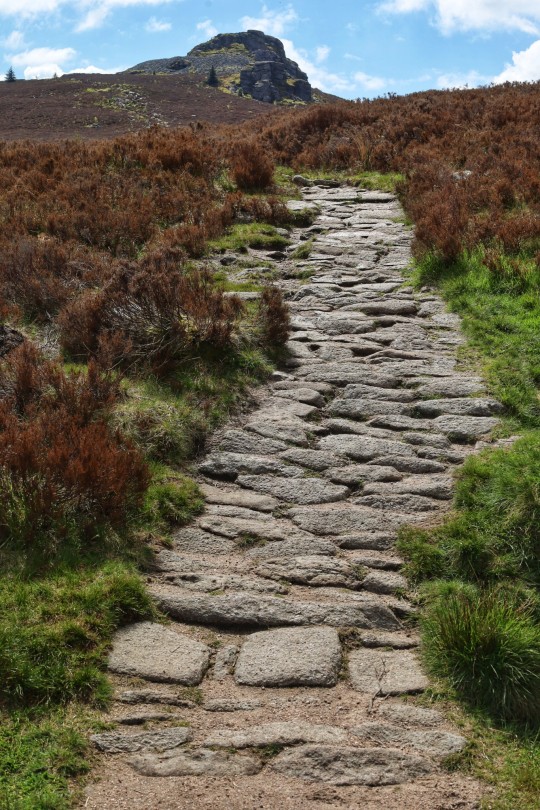
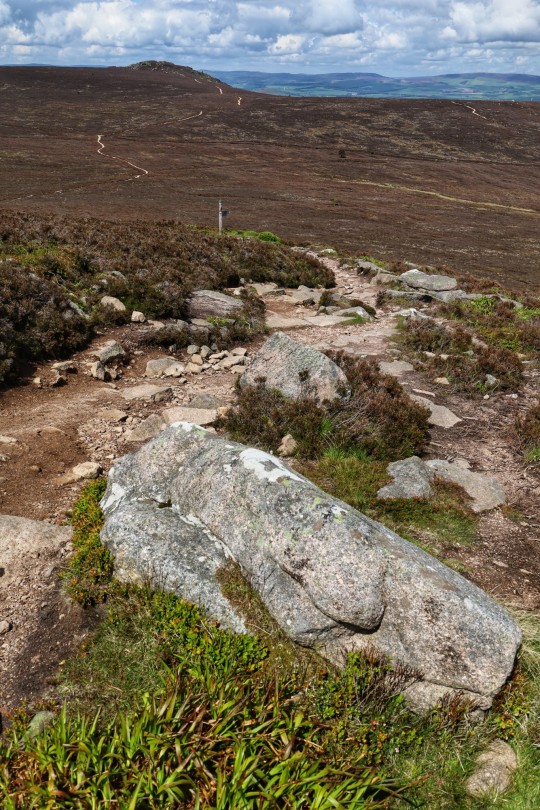

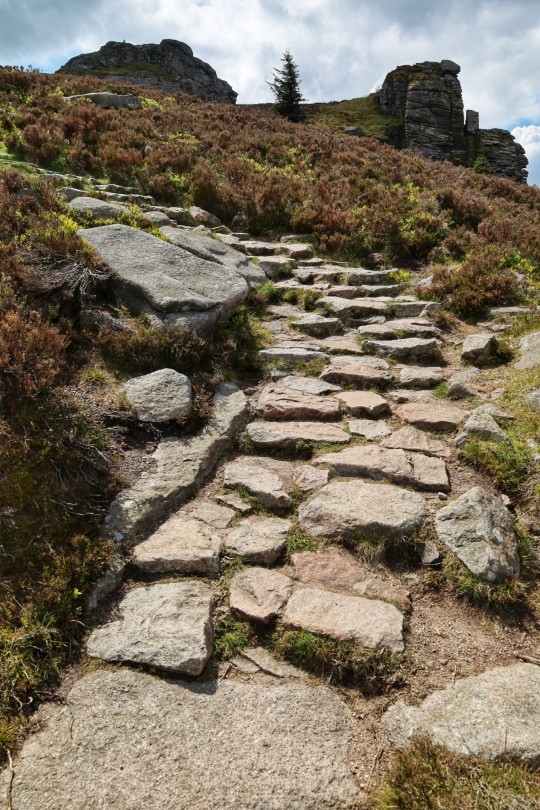
Upper Section of 'The Maiden's Causeway', an ancient route linking 'The Maiden Stone' Pictish Symbol Stone and Mither Tap Pictish Hillfort on Bennachie, Aberdeenshire, Scotland
#Pictish#pict#pictish beast#pictish symbols#picts#hillfort#standing stone#ancient route#ancient routes#routeway#trackway#tracks#ancient living#ancient cultures#ancient scotland#ancient craft#archaeology#landscape#outdoors#Bennachie
122 notes
·
View notes
Text

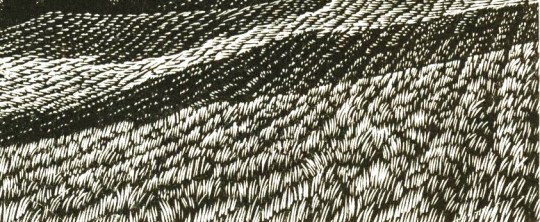
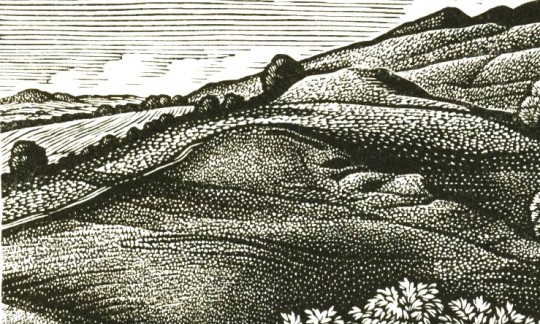
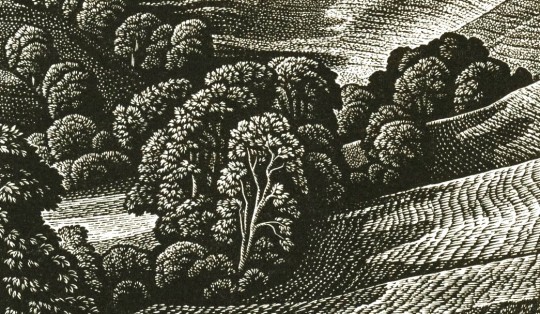
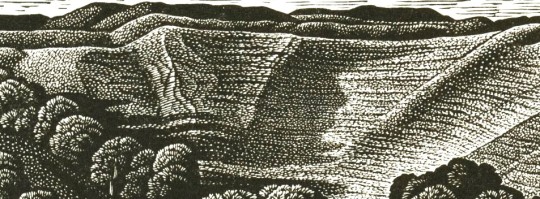
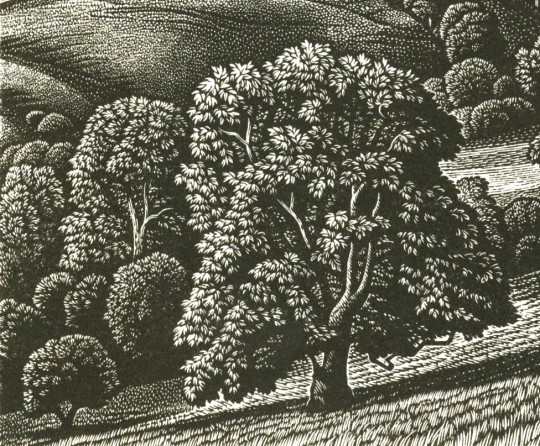
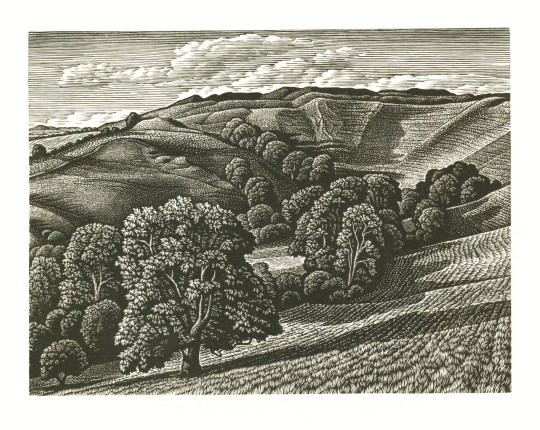
Wood Engraving Wednesday
HOWARD PHIPPS
This wood engraving of Eggardon Hill in Dorset, England by British artist Howard Phipps (b. 1954) was produced in 2019 for the publication 2020 Vision: Nineteen Wood Engravers, One Collector, and the Artists Who Inspired Them, printed in 2020 by Patrick Randle’s Nomad Letterpress at the Whittington Press in Cheltenham, Gloucestershire, in an edition of 340 copies for the 100th anniversary of the Society of Wood Engravers. In the book, Phipps identifies Edgar Degas, John Nash, and Eric Ravilious as strong influences. Phipps himself started off as a painter in the 1970s, making only occasional prints. His development as an engraver coincided with the revival of the Society of Wood Engravers in the 1980s. About this print, he writes:
I was interested in the ancient signs of humanity apparent in this landscape, and I like to use light to reveal the underlying sculpture of the striking hill forms, where chalk trackways draw the eye into or around deep combes.
Phipps was born in Colwyn Bay, North Wales and was raised in Cheltenham, England. He studied Fine Art at Gloucestershire College of Art in the early 1970s and taught in Plymouth for a while before settling in Salisbury in 1980. He was elected Royal West of England Academy (RWA) Academician in 1979 and a member of the Society of Wood Engravers in 1985.
View other posts with work by Howard Phipps.
View other posts from 2020 Vision.
View more posts with wood engravings!
#Wood Engraving Wednesday#wood engravings#wood engravers#Howard Phipps#Eggardon Hill#2020 Vision#Nomad Press#Whittington Press#Patrick Randle#Society of Wood Engravers#letterpress printing#fine press books#artistic influennces
123 notes
·
View notes
Text
Sauroposeidon

Sauroposeidon is a titanosaurian sauropod dinosaur known from several incomplete specimens including a bone bed and fossilized trackways that have been found in the U.S. states of Oklahoma, Wyoming, and Texas. The vertebrae are extremely elongated, with the largest one having an overall length of 1.4 m, making it the longest sauropod neck vertebra on record. Sauroposeidon was probably able to raise its head up to 18 m above the ground, and it is estimated around 30 m in total length. The mass of Sauroposeidon is estimated at 40–60 t.
111 notes
·
View notes
Text


Patreon request for Magno/rome.and.stuff - Ichthyovenator laosensis!
Icthyovenator is a Spinosaurid from the Early Cretaceous of Laos. Known only from fragmentary material, it seems to be unique among Spinosaurids for the strange divot in its spine. (In this depiction, I’ve also added another small divot further up the back; however, we don’t have that much of the spine, so this is purely speculative.) This strange sail could have been used for display or species recognition. Like other spinosaurines, Icthyovenator was likely adapted for a semi-aquatic lifestyle, hunting aquatic prey like fish, amphibians, and small dinosaurs. Like Spinosaurus, it had unusually tall vertebral spines on its tail which likely aided in swimming.
While it certainly wasn’t snacking on sauropods (except possibly via scavenging), it lived alongside large ones like Tangvayosaurus. Trackways in the Grès Supérieurs Formation belong to sauropods, iguanodontians, and neoceratopsians, though fish and turtles make up the majority of this ancient habitat.
~~~~~~~~~~~~~
This was a nice warmup for Archovember, and it’s also good to have another Spinosaurid under my belt. I should redraw Baryonyx and give it a size chart. Maybe someday I’ll have enough to make a full spinosaurid comparison chart. 🤔
Btw, the request tier for Patreon starts at only $5 a month. 😉 Link is pinned at the top of my blog.
#Ichthyovenator laosensis#Ichthyovenator#Spinosaur#spinosaurid#theropods#dinosaurs#archosaurs#SaritaDrawsPalaeo#saurischians
90 notes
·
View notes
Photo

The Sweet Track
The Sweet Track is a Neolithic timber walkway, located in the Somerset Levels, England. It was originally part of a network of tracks built to provide a dry path across the marshy ground. The Sweet Track ran between what was then an island at Westhay to a ridge of high ground, close to the River Bruce. The remains of mounds have also been found at Westhay, indicating the remains of a settlement.
About 1.6 kilometres (1 mile) long, the Sweet Track was discovered in the 1970s CE during a peat excavation by Ray Sweet, (who also gave the track its name). Using dendrochronology (tree-ring dating) the track has been dated 3807/3806 BCE. For many years it was thought to be the oldest trackway in Northern Europe, until 2009 CE when a slightly older one was discovered in Plumstead, London.
The Somerset Levels are an area of wetlands and peats. The conditions of such areas can naturally lead to the preservation of organic materials. Materials become encased in a wet and airless environment, thus preventing, to a degree, decomposition. Wooden artefacts and structures have been recovered from the Levels, as well as the two well-preserved Iron Age villages of Glastonbury and Meare.
The track would have been built by a community of Neolithic farmers living in small settlements. Farming had spread from the Middle East and by this point was firmly established in Britain. According to pollen evidence, the whole of Britain would have been covered in forests at this time. The Neolithic peoples would have burnt and cleared the forests to have the land on which to grow their crops, mostly grains. A fair degree of organization is evident in the stockpiling of wood and construction of the tracks, and some members of the community would have had to have skills in woodworking. Using stone and flint axes, the trees for the track were cut on dry land with different cutting techniques used, depending on their age. Older oaks were cut vertically whilst younger trees tangentially. Modern research has been carried out using replica axes and the cut marks have also been studied to establish the methods of cutting used. The planks of wood were put together in the marsh, the final construction taking about a day to complete. Long poles were driven slantwise into the ground and then planks were laid in between, held in place by vertical pegs. The planks were made of oak, ash and lime. The poles and pegs were made mainly of hazel and alder. There are also remains of another track, known as the “Post Track”, which dates 30 years earlier than the Sweet Track, 3838 BCE. It ran roughly parallel to the Sweet Track, possibly used by the builders of the Sweet Track as an access route.
Artefacts have been found beside the track, among them, pottery and axe heads including one made of jadeite. Whether they had been deliberately buried, perhaps as an offering, or just lost, remains unknown. There have been many Prehistoric trackways found in England, but more than half reside in Somerset. Included in these are the Abbot's Way, Eclipse, Honeygore, Meare Health and Garvins tracks. They were constructed using varying styles, such as corduroy - laying short logs parallel to each other and side by side. The Sweet Track is the most well-known of these. It has been declared a scheduled monument (of national importance). Most of it remains in its original location and requires constant conservation to keep the wood in its damp condition. There are reproductions and a donated section now resides in the British Museum, London.
Continue reading...
35 notes
·
View notes